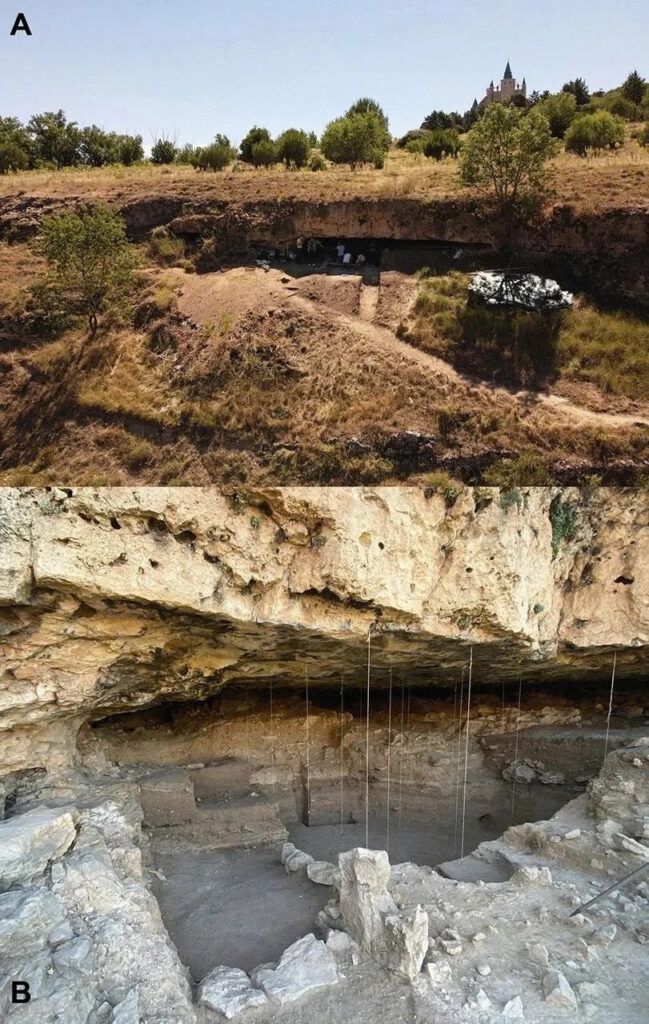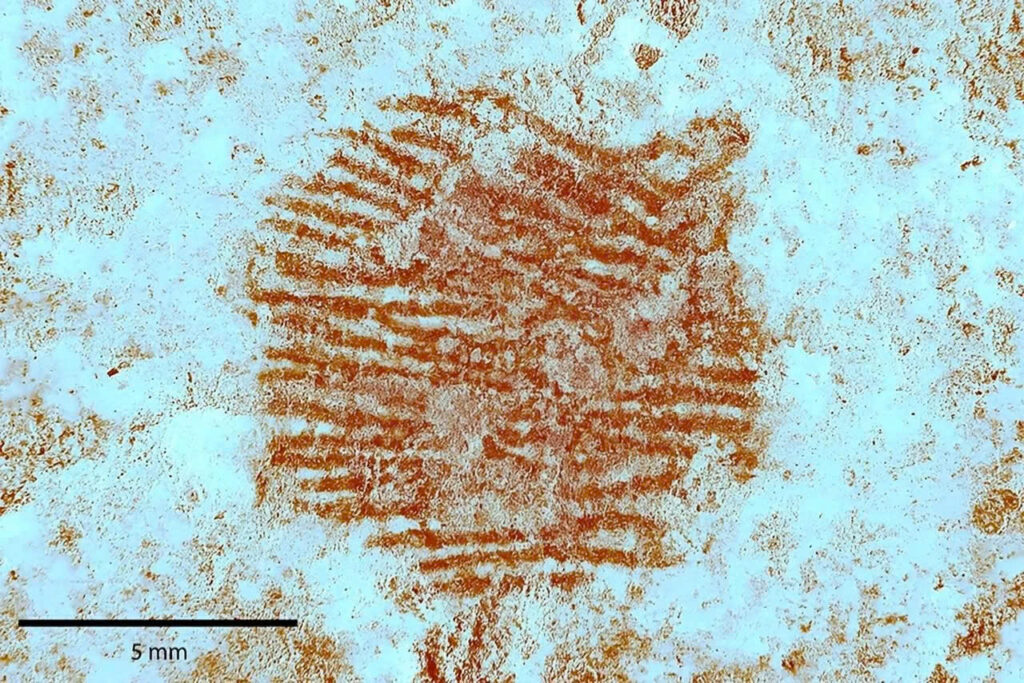Deep within the San Lázaro rock shelter in central Spain, archaeologists have made a remarkable discovery that challenges everything we thought we knew about our ancient relatives. A small granite pebble, stained with red ochre and bearing the distinct impression of a Neanderthal fingerprint, has emerged as potentially the oldest known example of human symbolic expression—dating back an astounding 43,000 years.
A Revolutionary Archaeological Find

The discovery, made near Segovia in central Spain, represents far more than just an ancient fingerprint. This carefully crafted artifact appears to be an intentional work of symbolic art, complete with what researchers believe may be the earliest known attempt at depicting a human face.
An international team of researchers from the Complutense University of Madrid, the Geological and Mining Institute of Spain, the Spanish National Police’s Scientific Police Unit, and the University of Salamanca collaborated on this groundbreaking study, which was published in Archaeological and Anthropological Sciences.
Advanced Technology Unveils Ancient Secrets

Using cutting-edge scientific methods, the research team subjected the granite pebble to extensive analysis. Through 3D laser scanning, multispectral imaging, and scanning electron microscopy (SEM), they were able to confirm the presence of an unmistakable human fingerprint preserved in red ochre pigment.
Forensic specialists verified that the fingerprint retains complete ridge patterns, bifurcations, and convergence points—clear indicators that this was no accidental marking but rather a deliberate application by a human hand, most likely belonging to a male Neanderthal.
Evidence of Intentional Symbolic Expression
What makes this discovery truly extraordinary is not just the fingerprint itself, but the context in which it was created. The 21-centimeter-long stone appears to have been carefully selected and transported from the River Eresma, located approximately 5 kilometers from the cave site. This deliberate choice suggests the stone held special significance for its ancient creator.
The Face That Launched a Thousand Questions
The arrangement of features on the stone is particularly intriguing. Two small, symmetrical indentations positioned above a larger central depression, with a precisely placed red ochre dot between them, create what appears to be a stylized representation of a human face. Statistical analysis using Monte Carlo simulations revealed only a 0.31% probability that this alignment occurred by chance, strongly suggesting intentional design.
The stone lacks any practical tool markings and differs significantly in size and shape from other Mousterian-era implements found in the same archaeological layer, further supporting the theory that it served a purely symbolic purpose.
Rewriting Neanderthal History

This discovery adds to a growing body of evidence that Neanderthals possessed far more sophisticated cognitive abilities than previously assumed. The find joins other significant discoveries, including cave art at La Pasiega and Maltravieso, in painting a picture of Neanderthals as beings capable of abstract thought and artistic expression.
Video
A Signature Across Time
As the research team noted, “This is not just a fingerprint; it represents the signature of an individual who manipulated this object with a purpose that transcends mere utility.” The work demonstrates that the capacity for imagination, symbolism, and creative expression was not exclusive to modern humans but was shared by our Neanderthal cousins.
Spanish cultural official Gonzalo Santonja has hailed the discovery as “the oldest portable painted object on the European continent” and “the only example of portable art created by Neanderthals.”
Implications for Understanding Human Evolution

While the elegant cave paintings created by early Homo sapiens at sites like France’s Chauvet Cave may surpass this humble pebble in artistic sophistication, the San Lázaro fingerprint represents something equally profound—evidence that the fundamental human drive to create, symbolize, and leave one’s mark on the world extends far deeper into our evolutionary past than ever imagined.
Whether this ancient artifact served as a ritual object, decorative piece, or simply the prehistoric equivalent of a signature, it stands as powerful proof that the cognitive revolution that defined humanity began much earlier than we once believed. The fingerprint preserved in ochre serves as a bridge across 43 millennia, connecting us to an individual Neanderthal who, like us, felt compelled to create something meaningful that would outlast their own existence.

